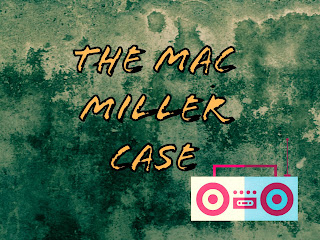The 'Wannabe' Criminal Justice System
Due to the assembly line process and negligence of the practitioners, the criminal justice system has been overwhelmed with the burden of offenders entering the revolving door. With such a dilemma a solution to dissolve this was implemented, that solution was diversion courts. Although the remedy has its benefits the administration, policies, and procedures of these unique courtrooms seems to be only working for either the duration of the program or at most a few years afterwards. The insufficient results of these programs can be explained by two factors; the negligence of both the social workers and courtroom professionals, and the egregious attempt of treatment by both parties. Specifically, this blog will discuss how the social workers that are attached to these diversionary tactics have gone haywire and used the granted association as a means to gain clout and prominence in their lives.
When an offender enters into a
diversion court there is an acknowledgment that treatment for whatever act they
have committed is necessary. This
recognition is a positive thing and conveys a sense of passion and an
understanding of how proper treatment can divert offenders away from the grasps
of the criminal justice system. However,
the process is flawed and the social workers are mainly to blame for this
fallacy. Moreover, when an offender
engages in private and group therapy they are forced to take on a negative
stereotype (criminal, addict, thief, etc.) and by doing this the social worker
and criminal justice system creates a client. They even go as far as using duress so that this stereotype is conformed
to. When this occurs the offender has no
choice but to adhere to the title and participate in the therapy assigned to them. Additionally, the treatment plan uses general
procedures for most of the therapy and expects to attain beneficial results by
doing this (laziness). This is where the
problem starts to arise; with each human being having different issues in their
lives the idea that a general structure can be used to solve the problems is an
inept approach. To suggest that each
person can identify or be rehabilitated with the same treatment agenda as every
other client is an atrocious inclination.
Again, this is where the problems start to occur, since the treatment is
mandated the social worker takes on the role of the three parts of the criminal
justice system (policing, courts, corrections).
By utilizing a plan that has general parameters there is bound to be a form of non-compliance. This non-compliance creates difficulties and frustration in the social worker's job, and in turn is then able to correspond to the admitting agency (the diversion court) and provide a “professional” opinion about the future of their client. Actions like these expel the “clout and prominence” characteristics that are aforementioned, when a social worker is able to dictate the future of a person it removes the treatment agenda and becomes an authoritative hierarchy, a structure that puts the social worker at the top. Still, the jurist of the courtroom is able to use his or her discretion, but to not consider the opinion of the social worker would expound that their professionalism has little merit. Hence the reason why judges use the referrals as a basis for their decisions, procedures like this transition the authority of the criminal justice system to the social workers and treatment facilities. Lastly, because the negative stereotypes are forced upon the clients the establishing and sustaining of one’s career becomes more solidified.
By utilizing a plan that has general parameters there is bound to be a form of non-compliance. This non-compliance creates difficulties and frustration in the social worker's job, and in turn is then able to correspond to the admitting agency (the diversion court) and provide a “professional” opinion about the future of their client. Actions like these expel the “clout and prominence” characteristics that are aforementioned, when a social worker is able to dictate the future of a person it removes the treatment agenda and becomes an authoritative hierarchy, a structure that puts the social worker at the top. Still, the jurist of the courtroom is able to use his or her discretion, but to not consider the opinion of the social worker would expound that their professionalism has little merit. Hence the reason why judges use the referrals as a basis for their decisions, procedures like this transition the authority of the criminal justice system to the social workers and treatment facilities. Lastly, because the negative stereotypes are forced upon the clients the establishing and sustaining of one’s career becomes more solidified.


Comments
Post a Comment